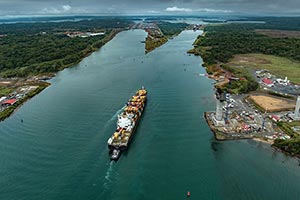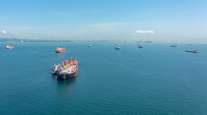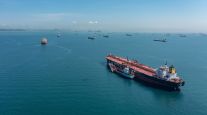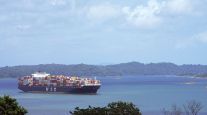Carolinas Ports Getting Ready for Bigger Ships From Panama Canal

The North Carolina State Port Authority is nearing completion of infrastructure improvements designed to prepare the Port of Wilmington for larger ships traveling through the new locks at the Panama Canal.
Seven years after the worldwide competition to build a new set of locks, the canal started accommodating larger ships June 26. This is expected to have wide-ranging effects on the flow of goods to and from Asia, Africa, Europe and the Americas.
“It’s a big deal for the industry and anyone who’s doing importing and exporting,” said Paul Cozza, executive director at North Carolina State Port Authority. “Transportation is going to be more efficient, [leading to] much more international business.”
For more than 100 years, the Panama Canal has helped power the world economy. Hundreds of ships travel through the canal’s original locks every month.
RELATED: Panama Canal Fever Sweeps Globe Again as New Era in Trade Nears
After the June 26 opening, the canal will be able to take ships almost triple the carrying size, Cozza said. The biggest type of ship that could currently pass through the canal — called Panamax — holds 4,500 20-foot-equivalent units, or TEUs. This is the largest ship that calls at the Port of Wilmington. The new ships will carry 8,000 to 10,000 TEUs, and the Wilmington enhancements are designed to accommodate those.
Sixty percent of container cargo business in North Carolina ports transits the Panama Canal, according to communications manager Cliff Pyron. So the port authority is investing more than $100 million in modernization efforts.
“The Port of Wilmington is expanding to increase the speed and efficiency of loading and unloading vessels,” Pyron said. “Specific improvements include the enhancement of multiple berths and purchasing new post-Panamax container cranes.”
RELATED: Panama Canal Expansion Exposes US Infrastructure, Shipper Woes
Effects will be felt up and down the East Coast. Using the expanded canal will be cheaper and more efficient for businesses, which will be able to carry significantly larger loads through it.
But Cozza says it’ll likely take about five years to see the full impact. And the effects won’t just be on the coast.
“This isn’t just a port thing,” he said. “Doing business in and around Charlotte will be easier.”
One-third of companies that do business in the Port of Charleston travel through the Panama Canal, according to Clint Eisenhauer, senior vice president of external affairs for South Carolina Ports Authority. The port is linked to Charlotte via one of Norfolk Southern’s rail lines.
Norfolk Southern’s $92 million intermodal rail freight yard opened in December 2014. It sits between two runways at Charlotte Douglas International Airport. An increase in activity at the port will likely translate to an increase in business in Charlotte, Eisenhauer said.
Charleston has been preparing for the changes in Panama. By 2020, Eisenhauer said it will deepen its harbor to 52 feet, which will be the deepest on the East Coast. He said some of the companies that use the port have already said they are going to increase the size of their ships to take advantage of the canal’s new locks.
“Charlotte is positioned well to benefit from the increased freight flows,” he said. “It’s hard to quantify it at the moment, but we certainly are optimistic and encouraged. We think it will be a positive effect on our whole region.”




